Learn why the fancy-schmancy super technical fishing techniques most anglers are being force fed will NEVER outfish a Texas rig Senko (And... Avoid the "false confidence" you get will only cause you desperate trouble!)
To be sure, one of the best fishing lures for bass in recent years is a fat stick-like soft plastic worm called the Senko, and for nearly 20 years it’s been taking the bass fishing world by storm. Why?…
Simply put, the lure works! It works for both beginning fishermen and more advanced ones, not to mention in many different fishing environments, including all types of water and even both daytime and nighttime fishing.
While this may sound simple on the surface, in fact, fishing the Senko can be highly technical. And it’s these technical secrets to fishing a Senko that will earn you 10-to-20x more bites!
There are a handful of ways to catch bass with a Senko and the two most popular rigs are the Texas rig and the Wacky rig.
I can remember asking myself, ‘how exactly do I fish with a Senko Texas Rig style’? The Texas Rig Senko is a popular way to present your Senko worm so it can be retrieved through various sorts of cover, including submerged vegetation, rocks, and timber, without “hanging up.”
If you want something faster, however, you can simply add some type of weight to the lure and that should work. For now, though, let’s take a look at all of the things that make Texas-rigged Senko lures unique.
Key Takeaways
For most anglers you can get away with fishing a Texas rig Senko only one or two ways. But that can’t be further from the truth!
- You can fish Senko Texas rig in many different ways.
- Rigging the Senko Texas rig correctly is vital.
- You have the option to fish the Senko “weighted” with a weight in front of the hook, or without any weight “weightless”.
- Each has style has its own subtleties that you need to keep in mind the next time you are on the water.
- Regardless of which type of rig you use, the best way to use a Senko is to let it sink slowly down to the very bottom of the water.
- The size of the weight can either help or hinder the baits natural movement and action under water… This will automatically attract the bass because it makes it look like a real worm.
Here are the ways to fish a Texas rig Senko...
As you can imagine, there are many different presentation/retrieval techniques when you use a Senko Texas rig. Here are a few more popular ones that successful fishermen have tried:
- 1) Dragging it. Good in the fall and winter when temperatures are cooler and fish are slower. Cast the lure along the cover and hug it tight. Sweep the rod tip from side-to-side two to three times, then reel in the lure slowly. This gives your fish more time to get to the lure even if it’s lethargic.
- 2) Lift and drop it. Good in the summer when bass are very active. Cast the worm close to the cover and let the lure sink to the bottom. Lift the rod about a foot and make sure the line is tight. Then, let the lure fall back to the bottom of the water. Make sure you rise and fall slowly and don’t jerk the rod up hard.
- 3) Jerking it. Fish the Senko as you would a fluke or a soft plastic minnow bait. Cast the lure out over or beside some structure. It can be fished on the surface, or you can also allow it to sink to your desired depth.
- 4) Flipping it. If you encounter a laydown, vegetation mat, or any other piece of structure flipping your Senko to your target gives you pin-point accuracy without making a large splash.
- 5) Skipping it. As you become more proficient a skill you need is how to skip a Senko under structure like a dock or a overhanging tree.
The more you practice with the Texas rig Senko, the more techniques you’ll come up with that work.
Remember that if the presentations and retrievals you’re trying don’t work, you can change your location or try something else.
The above techniques work great fishing from a boat or fishing off the bank.
How to Texas Rig a Senko
To Texas-rig a Senko lure, you can go either weight or weightless, so there is a certain amount of leeway involved.
To get started, decide if you’re going to fish the Senko weighted for weightless.
If you want to add some weight to your Texas rig, then thread your fishing line through the pointed end of a tungsten bullet weight and out the flat end.
Then, thread your line through a glass bead. The bead served two functions. First, it makes an audible clicking sound when the weight knocks into the bead. This gets the fish’s attention. Second, it protects the knot your line is tied to. Tungsten weights are very hard and can fray the knot over time.
Senko Texas rig - Step 1
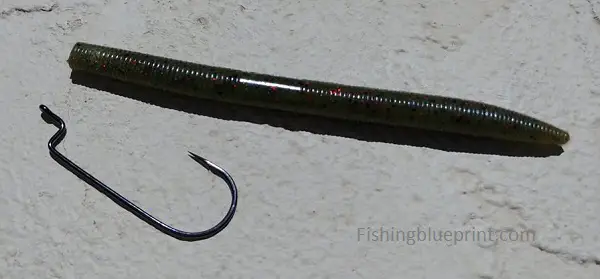
Gather your hook and worm.
Most avid Senko anglers will use a 3/0-to-5/0 worm hook
In the picture above a 4/0, Gamagatsu worm hook is used.
Senko Texas rig - Step 2
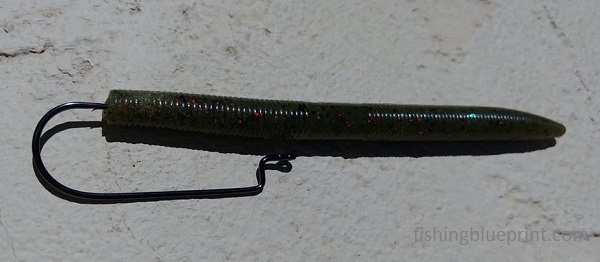

Next, push the hook in about one-quarter of an inch, or just past the barb of the hook.
Senko Texas rig - Step 3

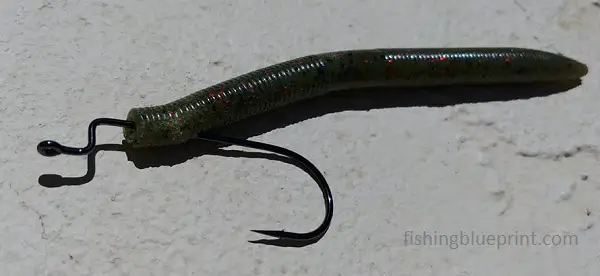
Let the hook come out of the bottom of the worm, then pull the entire hook through the head of the worm.
Senko Texas rig - Step 4
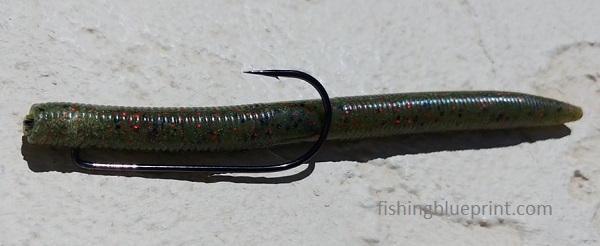
Next, advance the worm to the eye of the hook and twist it 90-degrees.
The top part of the hook should point to the top section of the worm.
Senko Texas rig - Step 5
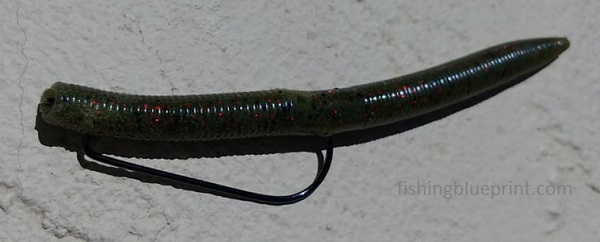
Finally, advance the hook point into the back of the worm without coming out the back.
This should get the hook in there nice and secure and weedless so it won’t come out.
How Is a Weighted Texas-Rigged Senko and a Weightless Senko Rig Fished Differently?
Fishing A Weightless Texas Rig Senko
When fishing a Texas-rigged Senko, most professional fishermen seem to prefer it weightless because the Senko itself is made with salt in it, so it comes pre-weighted.
A weightless Senko will naturally fall slower than a weighted Senko.
Keep in mind this has it’s advantaged and disadvantages.
One of the first recommendations for fishing with a Senko Texas rig is to fish it very slow. Remember the Senko gets its action from the shimmy it has when its falling.
However, if the target you’re fishing is in deep water, you could be waiting awhile for it to fall all the way to the bottom.
That’s why most bass anglers will fish the Senko in shallow cover, submerged vegetation mats, or in clear water conditions.
For example, a weightless Senko can be fished over grass where it will rest on top of the grass after it is done sinking. This prevents it from becoming wedged in the grass if a weight is used.
When you cast, you should keep your line loose and stay in contact with the lure as it’s sinking. This will take practice, especially because this type of lure sinks so slowly.
Another benefit of fishing a weightless Senko is its easier to skip under structure.
Fishing A Weighted Texas Rig Senko
Fishing a Texas rig Senko with a weight is incredibly helpful when you’re target is deeper than 6-12-feet deep.
Using a weight grants the angler the ability to get the bait down quickly and maintain bottom contact.
For general casting purposes, its strongly recommend go with a tungsten bullet weight.
- Tungsten is nearly 40% smaller than a large bulky lead weight, so it allows the bait to weave its way through any thick brush more efficiently without getting hung up.
- Tungsten is also much harder than a mushy lead weight. Now you can feel any changes in lake bottom composition much easier.
- Tungsten also makes a louder click when knocked against the glass bead which will draw more fish in.
- Tungsten is also more environmentally safe than lead. More and more lakes and regions want to protect local fish and wildlife and are making lead weights illegal to fish with.
What's The Best Weight Size For A Texas Rigged Senko?
The end goal of choosing the best weight for your Texas rig is to maintain bottom contact while avoiding getting hung up.
As a good rule of thumb, start with a 1/4-ounce weight if your target is 4-10-feet deep.
Then, if you notice you can’t feet the bottom or are constantly having to shake your bait free, make your adjustments.
If the conditions are windy you many need to increase the weight by 1/4-to-1/2-ounce.
Top 10 Locations and Structures to Fish a Texas Rigged Senko
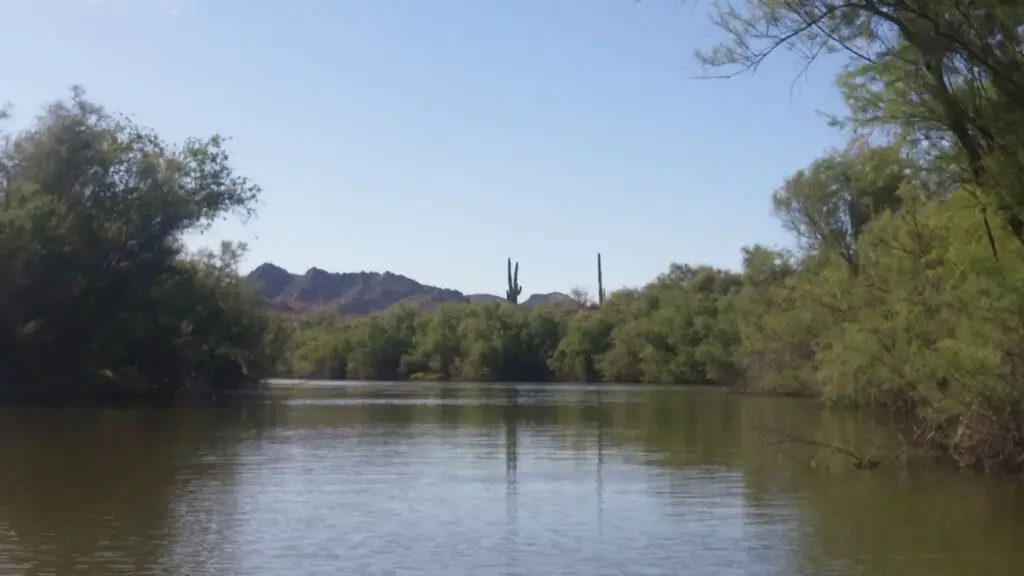
One of the biggest advantages to using a Texas-rig Senko is its versatility. Indeed, a Senko Texas rig will work all year long and in most conditions.
In no particular order here is list of the top 10 locations you need to fish as Texas Rig Senko:
- Submerged brush
- Rock piles and boulders
- Down rocky banks
- Points
- Bluff walls
- Ledges
- Submerged grass
- Floating vegetation
- Boat docks
- Vertical timber
- Bonus: Spawning beds
Best Senko Colors for a Texas Rig
Best All Around Senko Color
Naturally, your favorite Senko colors might be different from your neighbor’s favorites, but there is one color that seems to be everyone’s tackle box. And that is…..
Senko Green Pumpkin
#ad / Images from Amazon Product Advertising API
Best Senko Colors For Clear Water
In clear water, you need bait to look “natural” to the fish. Here are some of the best options for you to choose from. Watermelon Black; Baby Bass; Smoke Shad; Green Pumpkin
#ad / Images from Amazon Product Advertising API
Best Senko Colors For Stained Water
Best Senko Colors For Murky Water
#ad / Images from Amazon Product Advertising API
Best Senko Colors For Spring
#ad / Images from Amazon Product Advertising API
Best Senko Colors For Summer
Best Senko Colors For Fall
#ad / Images from Amazon Product Advertising API
Best Senko Colors For Winter
Best Senko Colors For Ponds
The Senko lures come in a large selection of colors, and for bass fishing, here are a few recommendations:
- Windy or cloudy days: white, chartreuse, or something with a silver or gold blade
- Low-light conditions: bright colors
- Cold water: black or black and blue
- Warm water: “living” colors, including brown, smoky gray, and green
- Water forage: shad and bait fish – Ayu, Wakasagi; crayfish baits – smoke gray or Green Pumpkin; bluegill – Green Pumpkin, purple, or chartreuse
These recommendations aside, if the color you’re using isn’t working, just switch colors.
In fact, most fishermen who use Senko lures have numerous colors on hand at any given time, since they know they’ll be using different colors for different scenarios.
Best Size Senko for Texas Rig Fishing
Senko lures range in size from 4 to 7 inches. Smaller Senko lures (i.e., 4- to 5-inch lures) seem to work best for bodies of water with a lot of pressure, have clear water conditions, as well as for skipping under docks and overhanging trees.
The lures are simply lighter and do especially well when fished on spinning tackle.
For Texas rigging, the larger Senko lures work better, especially when you’re flipping bait into and around any type of vegetation or brush.
When fishing thick cover, the 6- to 7-inch lures are great, and they do even better in any type of stained water.
The reason for this is obvious – they are larger and, therefore, stand out in the water and are easier for the fish to see.
Overall, if you don’t know where to start, buy the 5-inch size. It’s great on action, it gets a ton of bites, best of all big fish love them too!
Best Fishing Hooks for a Senko: 4-, 5-, and 6-inch Sizes
To Texas-rig a Senko lure, most fishermen find a 3.0- or 4.0-sized hook works best.
That being said, the 4/0-sized Gamakatsu worm hook is most commonly recommended when you’re first getting started in Senko fishing.
When you’re around shallow shoreline cover, especially when it’s into timber or brush, choosing a 4/0 or 5/0 straight-shank hook with a screw-in sinker of between 1/4 and 5/8 ounces is usually successful.
In fact, when using a Texas-rig Senko, the straight-shank hook is often recommended even by professional fishermen.
Tackle Considerations
Senko rods are categorized as light jig and worm rods and are ideal for the job.
Anglers can use either a spinning rod or a casting rod.
Best Casting Rod For Senko
The best Senko casting rods are often shorter than standard casting rods, ranging in length from 6’6″ to 6’8″, with a medium to medium-heavy backbone and a fast to extra-quick tip.
These rods have the ideal combination of a “springy” parabolic bend that allows for precise casting accuracy with an ox-like backbone.
But that is just the tip of iceberg. There are many other factors that go into determining what a great casting rod for senko (or worm fishing) should look and feel like. Some of those factors include style, material, length, sensitivity, durability, cost, and warranty. Fortunately, you in luck because I made a complete report where I give you the best casting rod for senko fishing that will fit into any budget and more!
Best Spinning Rod For Senko
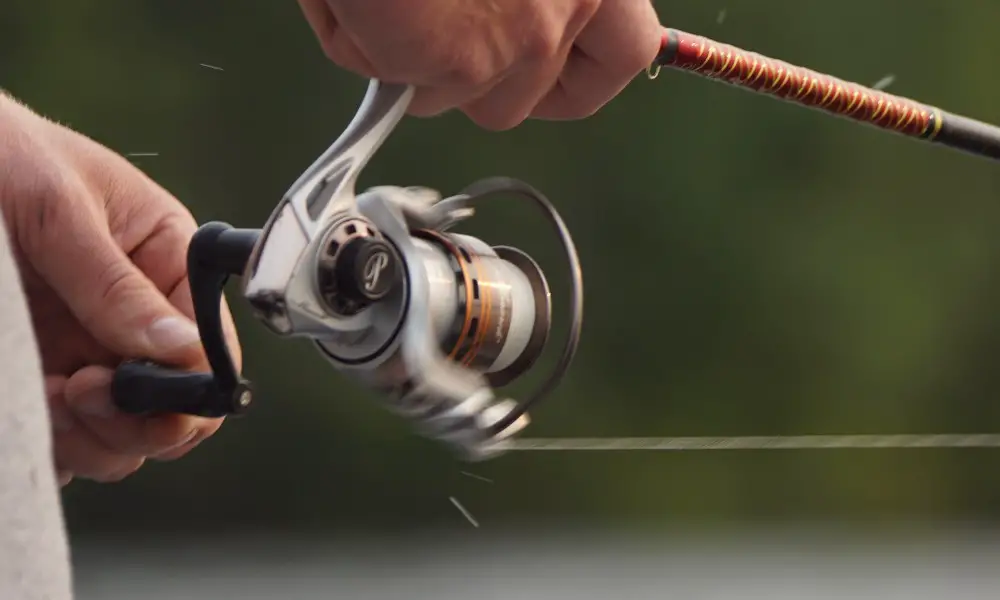
Regardless, if you don’t know what the best spinning rod for you is, call or stop into your tackle shop and talk to the owner.
You can also ask members of local bass angling groups will quickly answer your question. It’s not like you’re asking them to tell you what their favorite secret fishing spot is.
If you’re still having trouble finding the right spinning rod, read this post I wrote for you. It’s about, the Top 10 Spinning Rods For Senko Fishing – Some Of These Rods You Don’t Know About.
Best Fishing Line for Texas-Rigged Senko Fishing
Spinning and baitcasting gear is perfect for Senko lures, and when you’re around some type of thick cover, that’s when you want to employ the Texas rig.
Because of this, you can use a medium-heavy baitcasting rod that is 7 feet to 7 and a half feet, using a gear ratio of 7:1:1.
After all, you’ll want to get those fish away from the structure as quickly as possible.
Also, using a braided line in the 40- to 50-pound range with a 15- to 20-pound fluorocarbon leader tied to the braid works great with the Texas rig.
For offshore fishing, you can use a leader that is a little lighter, and save the heavier leader for those times when you’re flipping heavy shoreline cover.
Environmental Factors to Consider
Seasonal considerations – Spring.
One of the things that makes the Senko lures so great is its ability to help you catch a lot of fish all year long, making it a very versatile lure.
In the springtime, throwing it into the tulles or any other type of cover works especially well.
When fished weightless on 5/0 hooks and a slack line, it does even better.
Spring bass with a Senko is easily caught when you use a 1/4- to 5/8-ounce bullet sinker when tossing the lure into flooded bushes, dense grass, or any other cover.
It might make a horizontal fall tougher for the Senko, but in spring waters, it helps the bass see the lure much more clearly.
Seasonal considerations – Summer.
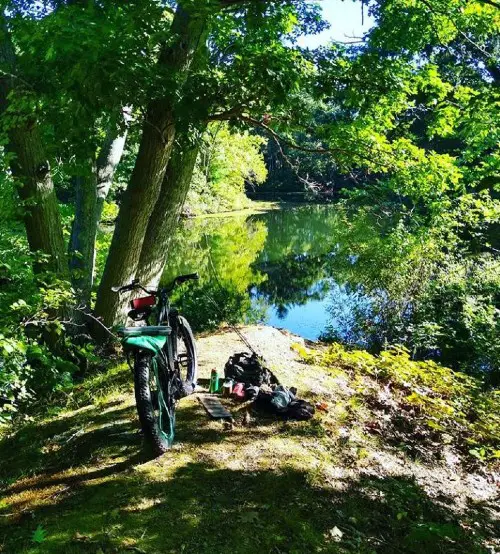
In the summer months, Senkos are good in various situations, including:
- When your fish are on offshore structures, especially if not a lot of people are doing this. A great way to get more bites!
- When you use the Senko together with the O-ring. Prepare to catch dozens of bass per summer!
- When you’re fishing in a lake near some weeds.
- When fishing right off the banks.
- When fishing in stained water, use June Bug because it shines and is much more noticeable to the fish.
Seasonal considerations – Fall.
During the fall months, try the larger-sized, dark-colored Senko lures, then fish slow and deep.
There are many advantages to fishing in the fall, especially since it’s not too hot and not too cold.
Senko has an amazing selection of colors, including dark and medium colors, and they work especially well during the fall months.
Until temperatures get into the low-50s, you can go bass fishing and be happy with the results.
Seasonal considerations – Winter.
In many unofficial surveys, the Senko was voted the number-one best bait for wintertime fishing.
This is due to the appearance of the lure, which is very alluring and irresistible to fish but also very unobtrusive.
The standard 5-inch Senko works especially well, and because of its many colors, you can always find one that attracts fish even when the days are short and things get darker quicker.
The brighter colors and slow motion of the lure do great when the water is cool and dark.
Seasonal considerations – Clear Skies versus Cloudy Skies.
For cloudy skies, the green colors seem to work well – not too dark and not too light in color.
Green pumpkin flake seems to be a favorite with fishermen on both clear and overcast days.
The black with blue flake also seems to work well.
Keep in mind that with overcast skies, it can be more difficult for the fish to see the bait because the water, too, will be a little darker than usual.
Keep your green Senko lures, especially Green pumpkin flake and similar colors, handy whenever the skies are cloudy.
Seasonal considerations – Clear/Lightly Stained Water versus Muddy/Dingy Colored Water.
A weightless Senko worm works great in stained or muddy water because of its action.
Bass often swim around the edges of the muddy water where it meets with clearer water looking for prey.
According to experts, the darker colors sometimes do well when the water is murky, but other fishermen say they’ve had luck with numerous colors and that they’re all worth trying.
The good news is that Senko makes so many colors that you’ll likely find more than one color that does great when the water is dingy or murky.
My Private Notes
When I fish a Texas rig, the majority of the time with with a Senko on the end of the hook. It’s my personal experience, I think the bass like the Texas-rigged Senko is because the hook itself is subtle and practically hidden, so all they see is the worm lure itself. The lure looks much more like what bass normally see in the water because of this setup, and they go crazy over it.
I’ve tested and inspected the rubber on other lures, but a Senko is very soft and it is loaded up with salt to get them the right weight, so when bass does bite on it, they tend to bite a little longer, which allows you time to reel them in.
With the Texas rig, I’ve seen time and time again the lure fall parallel to the bottom of the water and will wiggle just enough to make it look like a real worm.
The subtle wiggling is perfect for attracting bass, and the combination of the softness of the lure and the salt keep bass gnawing at it for quite a while.
Simply put, its my opinion since I spent so much time with fishing a Senko, adding it to a Texas rig, looks like the real thing to a bass fish, and this is the main reason the lure is so good at what it does.
The Texas-rigged Senko is great for both beginners and this is one of the first techniques that I’ve personally taught my own kids.
I’ve even seen the best professional anglers on the B.A.S.S. circuit still throwing these things. Regardless of your level of experience with bass fishing, it will be much easier to catch great bass whenever you use the Senko lure and the Texas rig.
Checkout These Other Texas Rig Fishing Articles...
- What Is a Texas Rig for Fishing? [Ultimate Guide Answering: How Do You Fish A Texas Rig, Best Setup, Hooks, Worm, And Much More]
- How To Fish A Senko Texas Rig (Easy Beginner’s Guide with Pictures)
- [Bait Battle] Texas Rig vs. Carolina Rig – What’s the Difference & When To Use
- REVEALED! Texas Rig Rod Specs You Need To Know – Length, Power, Weight, And Reel
Other Senko Related Articles Listed Below!
- What Is A Senko Bait? [We Got Your Answer Here!]
- How To Fish A Senko Texas Rig (Easy Beginner’s Guide with Pictures)
- Discover The TRUTH About Fishing A Wacky Rig Senko (... Avoid Getting Hung Up!)
- Hands Down! These Are The Best Spinning Rods for Senko Fishing (Texas Rig, Wacky, Weightless and More...)
- Discover The Best Casting Rod For Senko Fishing [My Budget Selection Costs Next To Nothing!]
More articles just for you...
Selecting Early Summer Bass Fishing Lures [Avoid 5 Common Mistakes]
A Complete Buyer’s Blueprint On The Best Early Summer Bass Lures On The Market Today! When it comes to bass fishing, choosing the right lure
Early Summer Bass Fishing [Avoid These 3 Sneaky Lies]
Learn these closely guarded secrets early summer bass fishing … and… dramatically boost your advantage over other anglers! Late spring to early summer bass fishing
Fear The Finesse? 7 Ned Rig Fishing Secrets Exposed!
Conquer the Fear of Finesse… and… Unlock the Potential Ned Rig Fishing – TODAY! Fellow Angler… Like most of you I’m pretty set in my
Fishing Spawning Bass [18+ Lures & Gear]
Get Ready For The Spawn Now When bed fishing, stealth is of the biggest essential tip. Instead of racing forward with a trolling motor, anglers
[2024 Editors Choice] Picking The Best Bass Fishing LINE For ANY Budget
What is the best bass fishing line? | What is a good fishing line for bass? The best type of bass fishing line is based
Drift Sock Basics – What It Is A Drift Sock & How To Use It [2024 Quick Start Guide]
What Does A Drift Sock Do? | Why Use A Drift Sock? photo cred: WLUK We’ve ALL been there… you work your butt off the




















